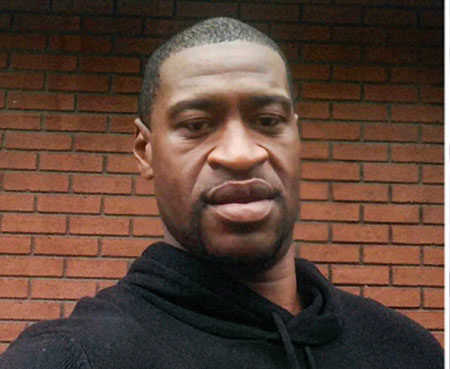House Passes George Floyd Justice In Policing Act, Advancing Overdue Change
Bill creates grants to fund community-based strategies proven to be successful at improving public safety, reducing violence
Washington, D.C. — Giffords, the gun safety organization founded by former Congresswoman Gabrielle Giffords, praised the House of Representatives’ passage of the George Floyd Justice in Policing Act and views it as a major step forward in long overdue police reform.
A major component of the bill is the authorization of new grant funding for community-based organizations to implement strategies such as violence interruption and hospital-based violence intervention, evidence-based initiatives championed by Giffords at both the federal and state levels that are proven to reduce gun violence. The legislation also includes provisions to ban chokeholds and no-knock warrants, hold police accountable in court, improve data collection on police misconduct, and make lynching a federal crime.
Adzi Vokhiwa, Giffords Federal Affairs Director:
“The George Floyd Justice in Policing Act is a major step forward for police reform and will help to reduce gun violence. This legislation would hold police accountable by changing the way they interact with the people they serve. It also meaningfully funds community violence prevention programs to provide neighborhoods with the resources needed to reduce shootings. House Democrats took bold action to create the structural change that we need to grapple with the country’s gun violence crisis and reform policing policies that lead to the unjust killings of Black and Brown Americans. Racist policies have no place in how we keep our communities safe and the Senate should take up this critical bill immediately.”
A report by the Giffords Law Center, In Pursuit of Peace: Building Police-Community Trust to Break the Cycle of Violence, examines how community trust, policing, and gun violence intersect in 21st century America. It also underscores how our country’s gun violence epidemic is connected to racial inequality and racism. Over the past decade, over 125,000 Americans were intentionally shot and killed by another person. It is estimated that at least five times that number were hospitalized or treated in emergency rooms after surviving serious, life-altering gunshot injuries. The vast majority of those shot by another person were people of color.
For too long, American communities have failed to invest in effective programs to address this violence and murder inequality. But recently, more states and localities are turning to proven intervention strategies. Research and case studies have shown that through a combination of low-cost, community-oriented intervention programs and much-needed firearms policy reforms, gun violence rates in underserved communities can be dramatically reduced in as little as two years.
Earlier this year, Giffords joined with 20 American mayors to send a letter to leadership in the Senate and House of Representatives calling for federal aid to cities battling community gun violence during the coronavirus pandemic. The letter notes that gun violence has remained persistently high in cities, disproportionately impacting Black and Brown communities who are also among the most vulnerable to COVID-19. During the coronavirus pandemic, violence interrupters and outreach workers have emerged as a critical frontline public health resource, but as the pandemic depletes budgetary resources, many cities may be unable to sustain these lifesaving community-based interventions.
Giffords Law Center’s A Case Study in Hope: Lessons From Oakland’s Remarkable Reduction in Gun Violence details Oakland’s successful citywide gun violence reduction strategy and why these programs are more important than ever. Since 2012, Oakland has cut its annual shootings and homicides nearly in half. In 2018, Oakland recorded its lowest number of homicides in almost two decades. This stands in direct contrast to many other major American cities that saw an increase in gun violence after 2012.

